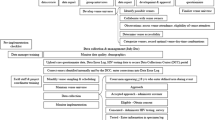Abstract
Nationally heterosexuals are an HIV prevention priority. In addition to case based HIV surveillance, behavioral surveillance surveys are conducted among heterosexuals living in high AIDS morbidity neighborhoods. We report on risk behaviors and HIV prevalence among “high-risk” heterosexuals in San Francisco. National HIV Behavioral Surveillance System is coordinated by the CDC and implemented in 21 health jurisdictions. The studies were conducted in 2006, 2010 and 2013 in San Francisco. Respondent driven sampling was used to sample participants. Eligible persons were 18–50 years old and had sex with at least one opposite gender partner in the past year. We obtained samples of 371, 421, 165 heterosexuals in 2007, 2010 and 2013, respectively. Some demographics varied across the 3 years. Residential neighborhoods changed, homelessness and healthcare coverage increased. Binge drinking, cocaine and heroin use increased while methamphetamine use declined. There were no changes in numbers of partners, unprotected vaginal intercourse or unprotected anal intercourse. Commercial sex work increased. Even with “fine tuning” of eligibility criteria to attempt to find heterosexual HIV cases, we estimate that HIV prevalence was 0.3, 0.2 and 2.4 % in 2007, 2010 and 2013 respectively. The increase was not statistically significant. For the present, effective prevention among persons in the populations most severely affected by HIV remains the priority, for their own benefit and to prevent transmission to other vulnerable populations to which they may be connected.

Similar content being viewed by others
References
Centers for Disease Control and Prevention. Pneumocystis-pneumonia. Los Angeles. MMWR. 1981;30(21):1–3.
San Francisco Department of Public Health. HIV/AIDS Annual Report, 2010. http://www.sfdph.org/dph/files/reports/RptsHIVAIDS/AnnualReport2010_2.pdf Accessed 15 Sep 2014.
San Francisco Department of Public Health. 2010 San Francisco HIV Prevention Plan. http://www.sfhiv.org/wp-content/uploads/HIV-Prev-Plan2010_final.pdf Accessed 24 Feb 2015.
Centers for Disease Control and Prevention. HIV infection among heterosexuals at increased risk—United States, 2012. MMWR. 2013;62(10):183–8.
San Francisco Department of Health. HIV/Epidemiology Annual Report 2012. http://www.sfdph.org/dph/files/reports/RptsHIV/AnnualReport2012.pdf Accessed 20 Mar 2014.
Gallagher KM, Sullivan PS, Lansky A, Onorato IM. Behavioral surveillance among people at risk for HIV infection in the U.S.: the National HIV Behavioral Surveillance System. Public Health Rep. 2007;122(Suppl 1):32–8.
San Francisco Department of Public Health. Atlas of HIV/in San Francisco, 2010. http://www.sfdph.org/dph/files/reports/RptsHIV/HIVAtlas2010.pdf Accessed 15 Sep 2014.
United States Census. (2014). Census data. www.census.gov Accessed 15 Sep 2014.
Hall HI, Mokotoff ED, Advisory G. Setting standards and an evaluation framework for human immunodeficiency virus/acquired immunodeficiency syndrome surveillance. J Public Health Manag Pract. 2007;13(5):519–23.
Ruiz JD, Molitor F, McFarland W, Klausner J, Lemp G, Page-Shafer K, Parikh-Patel A, Morrow S, Sun RK. Prevalence of HIV infection, sexually transmitted diseases, and hepatitis and related risk behavior in young women living in low-income neighborhoods of northern California. West J Med. 2000;172(6):368–73.
Levy V, Page-Shafer K, Evans J, Ruiz J, Morrow S, Reardon J, Lynch M, Raymond HF, Klausner JD, Facer M, Molitor F, Allen B, Ajufo BG, Ferrero D, Sanford GB, McFarland W, HeyMan Study Team. HIV-related risk behavior among Hispanic immigrant men in a population-based household survey in low-income neighborhoods of northern California. Sex Transm Dis. 2005;32(8):487–90.
Kim AA, Martinez AN, Klausner JD, Goldenson J, Kent C, Liska S, McFarland W. Use of sentinel surveillance and geographic information systems to monitor trends in HIV prevalence, incidence, and related risk behavior among women undergoing syphilis screening in a jail setting. J Urban Health. 2009;86(1):79–92. doi:10.1007/s11524-008-9307-6.
Schwarcz SK, Kellogg TA, Kohn RP, Katz MH, Lemp GF, Bolan GA. Temporal trends in human immunodeficiency virus seroprevalence and sexual behavior at the San Francisco municipal sexually transmitted disease clinic, 1989-1992. Am J Epidemiol. 1995;142(3):314–22.
Oster AM, Wertheim JO, Hernandez Al, et al. HIV transmission in the United States: the roles of risk group, race/ethnicity, and geography (Abstract 213). Presented at Conference on Retroviruses and Opportunistic Infections, 2014. Boston.
Author information
Authors and Affiliations
Corresponding author
Rights and permissions
About this article
Cite this article
Raymond, H.F., Jin, H., Scheer, S. et al. Efforts to Find Heterosexual HIV in San Francisco, 2007–2013. AIDS Behav 19, 2317–2324 (2015). https://doi.org/10.1007/s10461-015-1047-5
Published:
Issue Date:
DOI: https://doi.org/10.1007/s10461-015-1047-5




